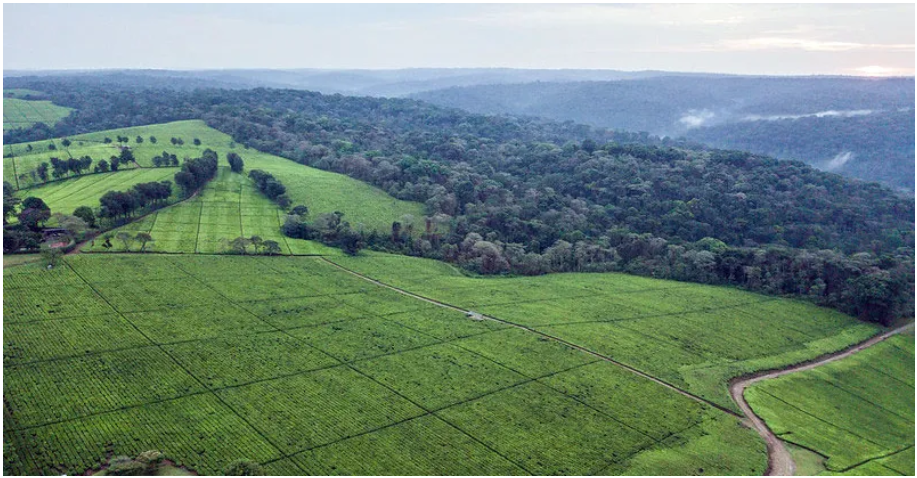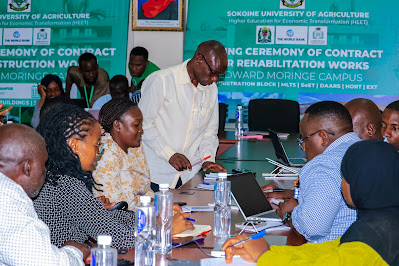Climate-change scientists can now apply an R software package that can help predict genetic changes. Described in the scientific journal, PeerJ, AlleleShift can be used to investigate the potential effects of climate change, with one possible application of the software being in the design of tree-seed sourcing programmes.
The article was authored by Roeland Kindt, a senior scientist with the Center for International Forestry Research and World Agroforestry (CIFOR-ICRAF), who works in the Tree Productivity and Diversity research group.
The R package provides a novel method of predicting how populations of plants or animals would respond to environmental changes, such as those associated with climate change. The package also provides various visualization methods that can easily be transformed into animations that depict genetic changes along a time series.
Alleles are an alternative form or version of a gene. Some alleles are associated with adaptive traits, such as to conditions of drought or extreme temperatures. To avoid the possibility that populations will become unsuitable or maladapted to future alterations of their habitat, allele frequencies should change to keep track with environmental changes.

Columns on the left reflect baseline frequencies with frequency of the minor allele in black. Columns on the right reflect future frequencies, with color of the arc and color of the central circle reflecting frequencies and trends (red = decreasing, green = increasing) of the minor allele
“These genetic changes — defined elsewhere as genomic offset or the distance between the current and required genomic composition in a set of putatively adaptive loci — are possible through evolution or migration,” said Kindt. “But in many places, we expect that the current rate of climate change is much more rapid than these natural coping strategies. Where this is the case, methods of assisted gene flow and assisted migration, such as seed translocation, will be needed to ensure that populations or species do not become extinct and continue to fulfill their important functions.”
The development of the methods used by AlleleShift, which was partly funded by the CGIAR Research Program on Forests, Trees and Agroforestry, used a novel approach: a prediction procedure involving a first calibration and prediction step through “redundancy analysis” (RDA); and a second calibration and prediction step through a “generalized additive model” (GAM) with a binomial family.
“For us, AlleleShift supports work to develop what we call ‘climate-appropriate portfolios of tree diversity’ for productive and resilient future landscapes and livelihoods,” said Lars Graudal, one of the leaders of the Tree Productivity and Diversity research group who also works for Denmark’s University of Copenhagen. “Work such as AlleleShift provides another decision-support tool to help with development of climate-smart response plans.”
Different visualization methods depict the predicted shifts in allele frequencies from baseline to changed climates.
“As some tropical trees face an uncertain future due to environmental changes caused by warming temperatures, this tool can help assess a range of potential breeding methods that can ultimately help farmers select for hardier species — species that are more resilient that may potentially be characterized by deeper growing roots to better access groundwater, for example,” Kindt said.
Many countries have started developing national adaptation plans in anticipation of extreme climatic events. To assist governments in developing plans for forests and agricultural systems with trees — because in these areas, adaptation needs to be developed well in advance given the long-lived nature of the species — scientists from CIFOR-ICRAF with collaborators from national institutes, the University of Copenhagen and Scotland’s James Hutton Institute are developing various tools, such as AlleleShift.
The loss of trees and other plants can exacerbate climate change as they store carbon dioxide, which is emitted as planet warming gases, potentially jeopardizing the ability to meet goals agreed under the U.N. Paris Agreement aimed at preventing post-industrial average temperatures from rising to 1.5 degrees Celsius or higher, according to scientists.
In addition, sustainably managed agroforestry ecosystems, which integrate trees and crops can help forestall global warming by facilitating tree retention and preventing land degradation and further loss of vegetation.




